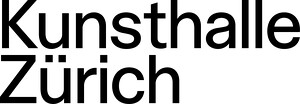Kicking Dust
February 5–May 22, 2022
Limmatstrasse 270
CH-8005 Zürich
Switzerland
“Igshaan Adams has a tremendous gift for delicacy and a poet’s understanding of time, of how it can erode and mark our daily lives.” —Hilton Als
The Kunsthalle Zürich is to show Igshaan Adams’ first major solo exhibition in continental Europe. This comes to Switzerland from the Hayward Gallery in London where it was on view from May–July 2021. The exhibition Kicking Dust is akin to a park, a landscape that absorbs and surrounds us with the everyday, desire, narrative and countless contrasts.
Igshaan Adams’ art speaks of origin, religion and sexuality and it connects the proximate, the distant and the seemingly contradictory. Woven tapestries, filigree sculptures and expansive structures bridge opposites. They spin threads, hold and weave together ideas. His art is abstract, poetic and at the same time grounded in lived experience. It absorbs visitors yet leaves space and calm for reflection. The exhibition Kicking Dust is reminiscent of a garden or a park crisscrossed by visible and invisible paths, wishes and memories.
Igshaan Adams (b. 1982) lives and works in Cape Town, South Africa. His biography, as he says in interviews, is shaped by the experience that a great many things come together both in a person, but also in societies—many elements that seem as if they could not be connected or seem mutually exclusive. Adams was born in 1982 in Bonteheuwel, a segregated township in Cape Town created between 1961 and 1964. During the apartheid, Black and “Coloured” communities—a classification of people of various mixed ethnicities—were forced into parts of the city that were deemed barren and undesirable. As a Creole with Malay roots, Adams was classified as Coloured. A practicing Muslim, he grew up with Christian grandparents, and as openly homosexual he occupies a fragile position in this same religious community.
Kicking Dust traces pathways through dense weavings that appear to cross over one another on the gallery floor. These courses are based on the improvised, unplanned pathways (desire lines) walked by the residents of Cape Town. Found on the border of Bonteheuwel and the neighbouring township of Langa, these paths have long been walked, despite a history of racial and religious hostility between the different communities.
Adam’s art, however, is not implicitly biographic. It is not figurative or anecdotal, but abstract—and yet exceedingly representational. Material is central: in Adams’ case cord, glass beads, plastic, wood, silk, glass or fabric, which are woven into large carpets or expansive installations. Some of them are made by Adams himself, though he is often assisted by women who have mastered traditional weaving techniques passed down to them over generations. Through this collaboration, the traditions, ideas and stories of others flow into his work.
Weaving is an ancient craft, in which the simple interlacing of materials creates elaborate designs. Through patience and care, Adams’ work transforms and recycles everyday humble materials into opulent compositions of extraordinary beauty. Adams’ weaving is transparent in that each element remains independent, even though they are firmly integrated: a glass bead remains a glass bead, but in combination with others it becomes something new. Weaving unites without dissolving difference. This gives rise to pictorial spaces and immersive installations that absorb us as participants as if we were the bead. The visitor becomes part of the process and yet remains autonomous. Adams’ installations are therefore spaces of experience. They can be physical, aesthetic, transcendental or even religious, and they are always impressive.
Kicking Dust, the title of the exhibition, refers to an indigenous South African dance that Adams observed as a child among his grandparents’ Nama community in the Northern Cape province. Described as “dancing in the dust,” the dance is a courtship ritual where clouds of dust erupt from the ground as performers energetically kick the dry ground. Throughout the exhibition, cloud-like sculptures made of spiralised wire and beads hover in space, resonating with the image of travelling dust picked up from the earth below. “Kicking dust” can be understood as an allegory for art in general, as an activity that throws stuff in the air. Dust is nothing, dust is everything, it is, like time, unimportant and essential.
Curated by Tarini Malik (Hayward Gallery) and Daniel Baumann (Kunsthalle Zürich).
The exhibition is organised by Hayward Gallery, London in collaboration with Kunsthalle Zürich. At the Hayward Gallery the exhibition was curated by Tarini Malik and Marie-Charlotte Carrier.
Kicking Dust is accompanied by an extensive mediation programme, including free workshops for schools, regular tours and family events.


